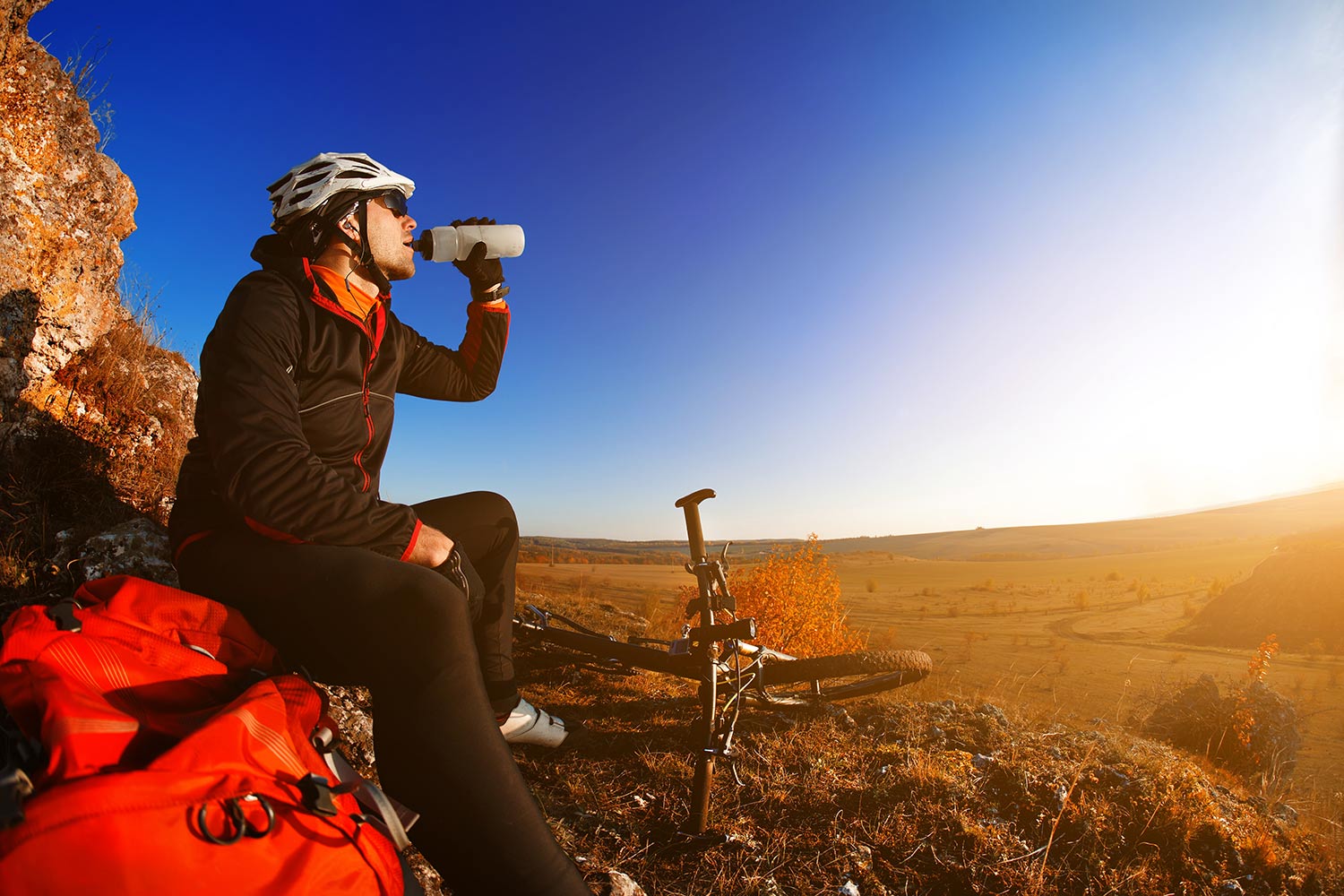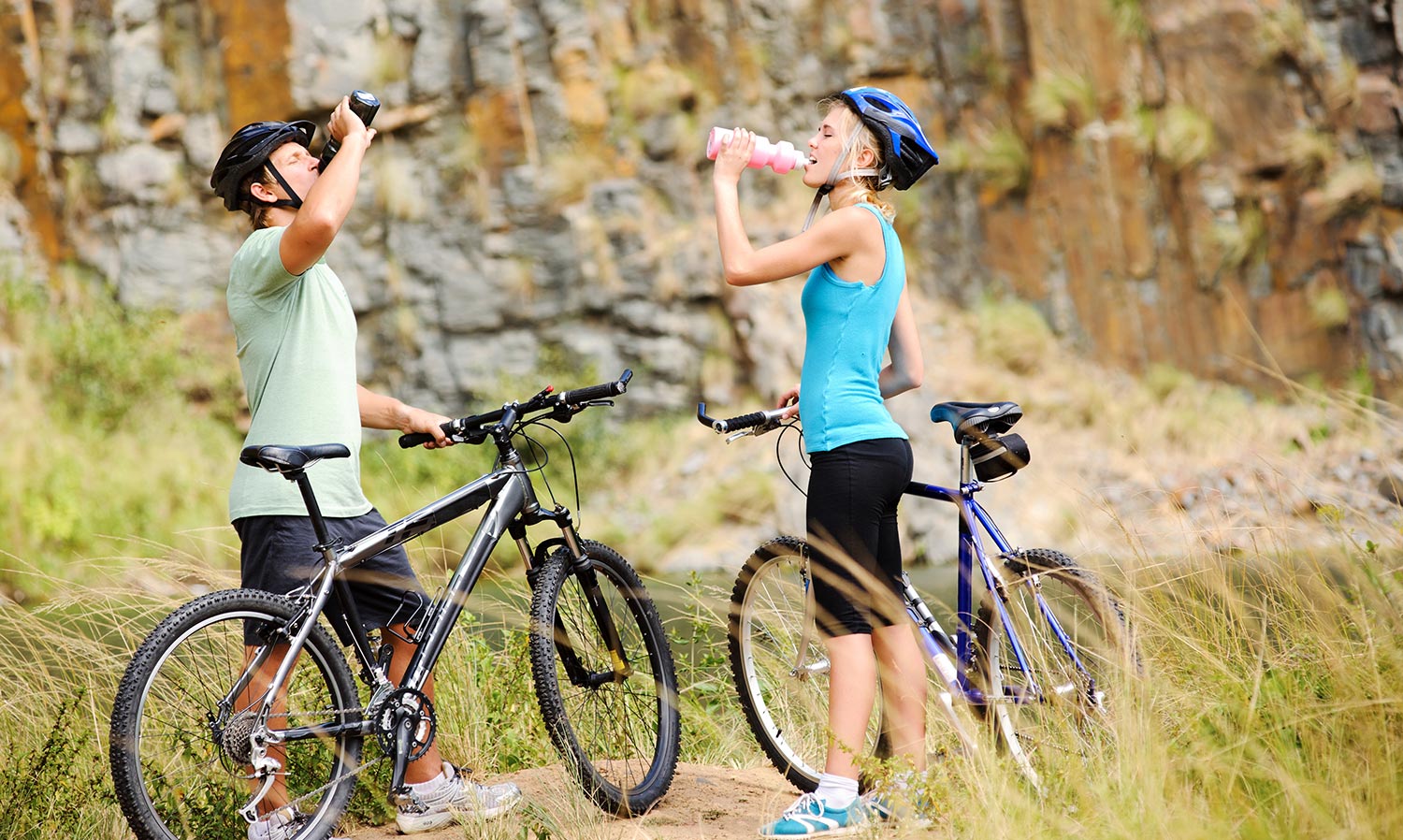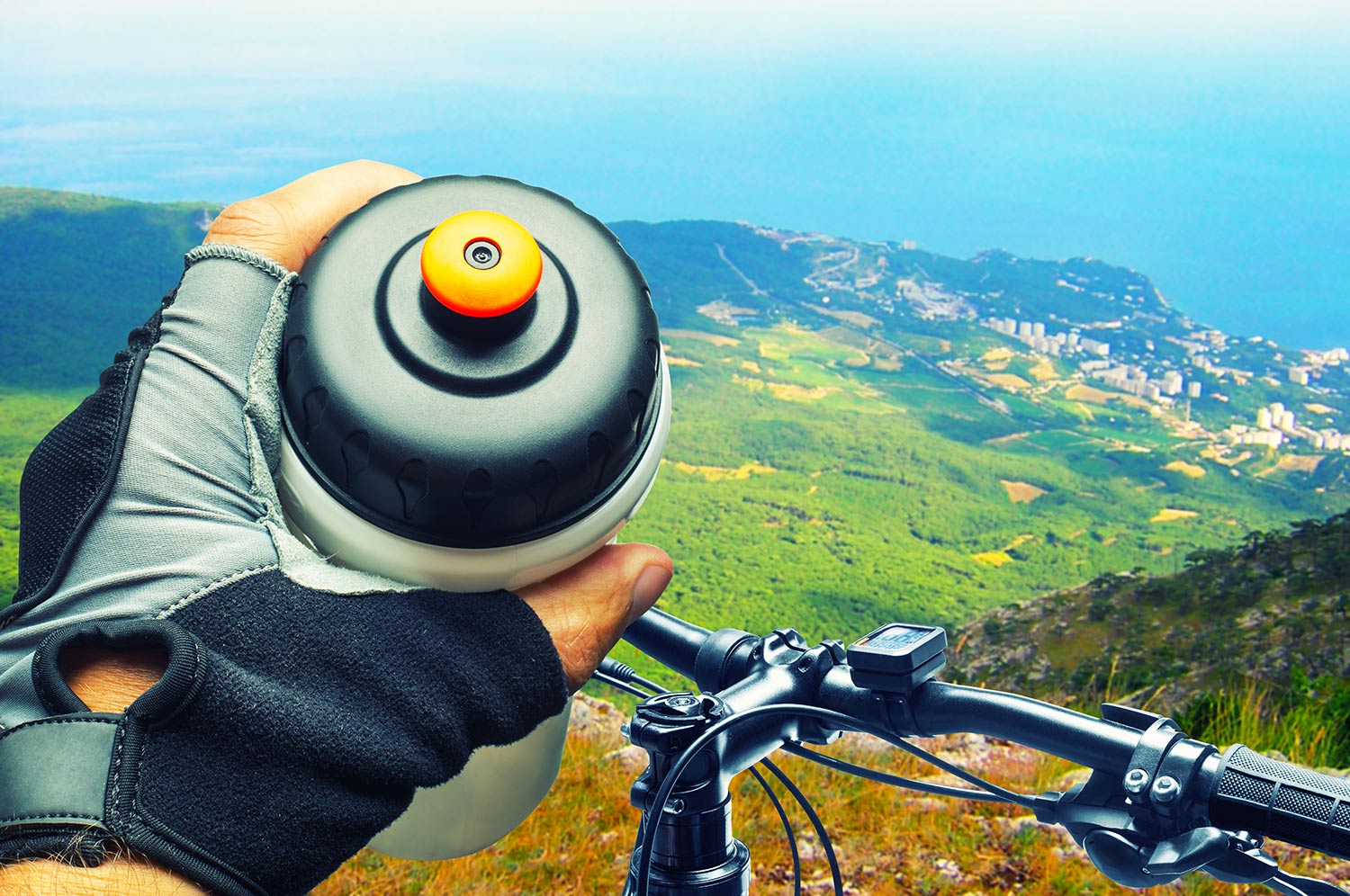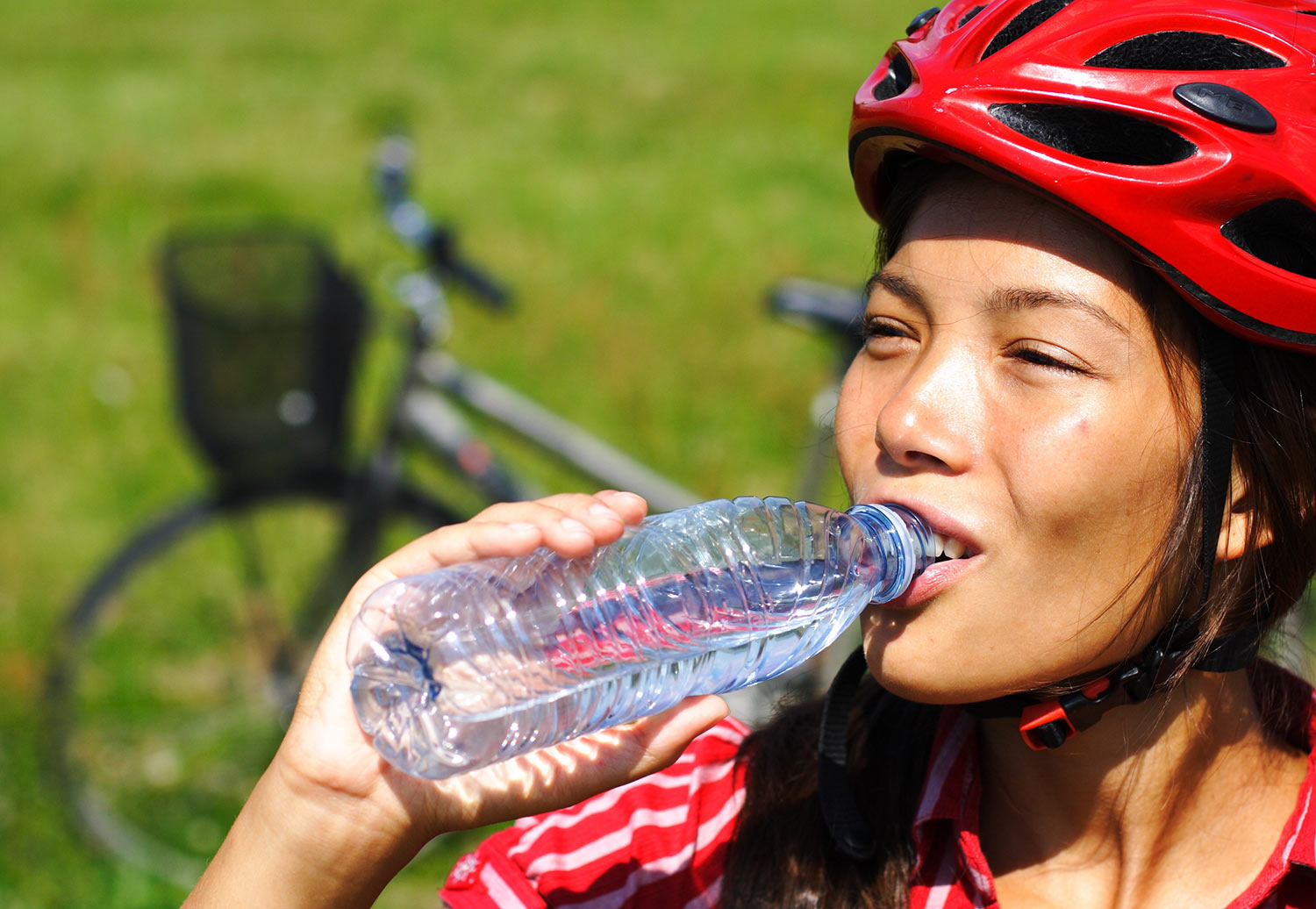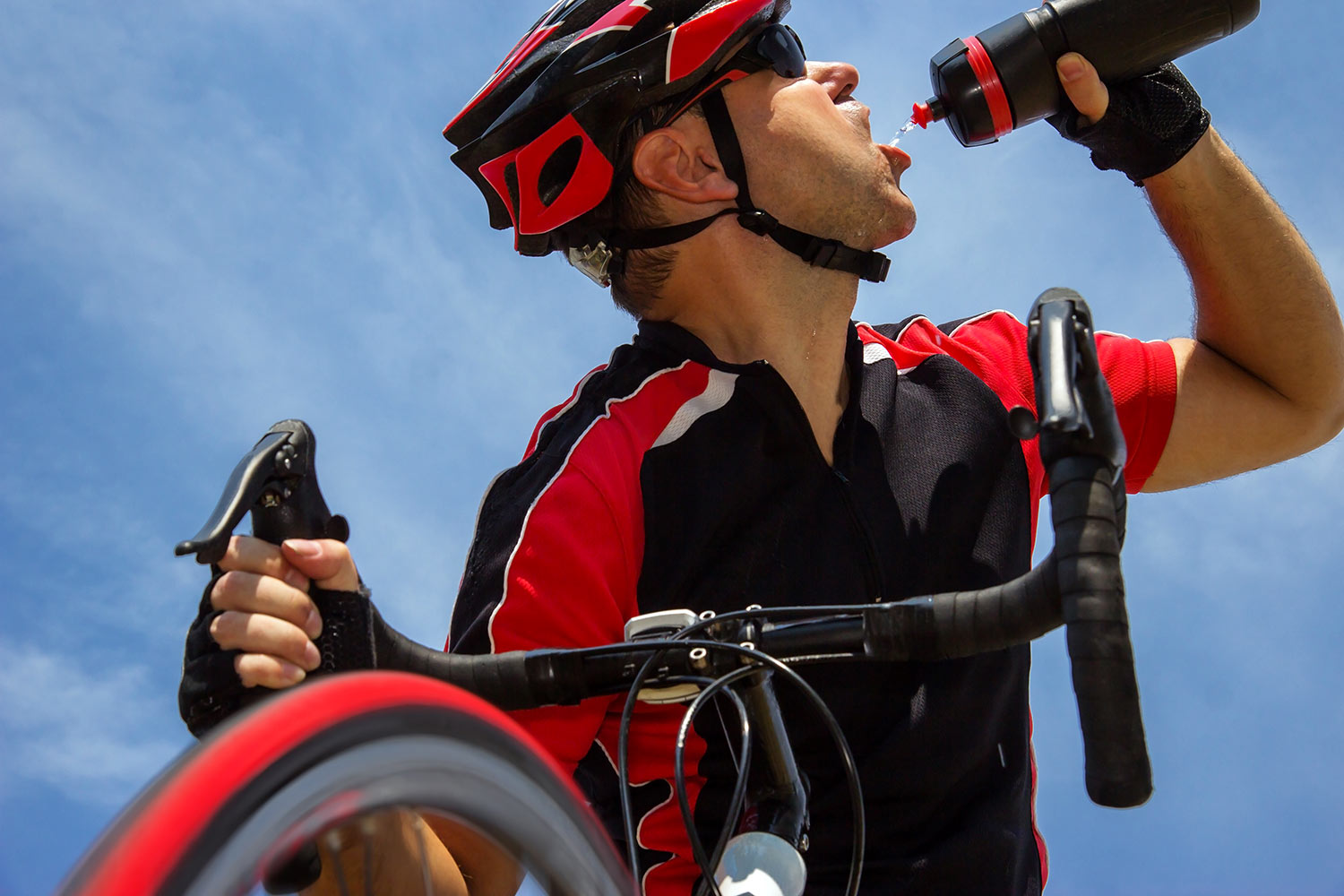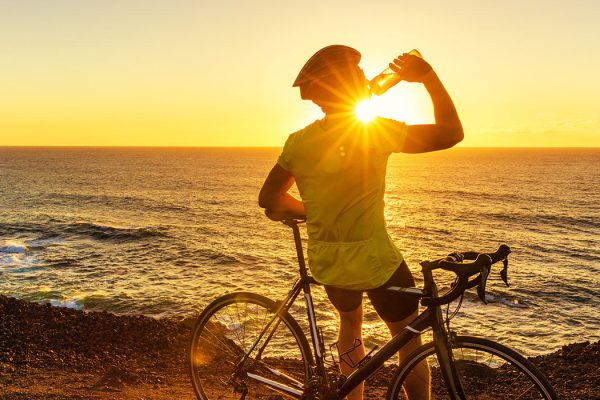What and how much drink when cycling in a heatwave
The heat and the consequent sweating and dehydration are some of the enemies most feared by those who love cycling. So let’s continue to analyze which are the best practices to follow, trying to offset the negative effects of high temperatures.
When to drink on the bike
The key point to remember is not to wait until you’re thirsty but to drink little and often right from the start of your ride.
Aim to take 2-3 good sized gulps from your bottle every 10-15 minutes right from the moment you roll off. Just like eating on the bike, you’re not drinking for that moment but 10-20 miles down the road.
Don’t forget your recovery drink at the end of a long ride either. No matter how careful you’ve been with your hydration, especially on a hot day, you’re likely to be dehydrated and, as well as providing the protein and carbohydrate to kick start your recovery, the fluids and electrolytes that a recovery drink provides are essential.
What to drink on the bike
For rides of under 60 minutes, plain water is fine but, for longer rides you’ll want to add electrolytes and carbohydrates. Plain water won’t deliver any energy, can cause you to feel bloated and will reduce your desire to drink before fluid losses have been replaced.
Electrolytes are salts that include sodium, potassium, calcium and magnesium. They are lost in sweat, are essential for normal cellular function and have to be replaced. Most commercially available sports drinks have the correct balance of electrolytes and, if you don’t want to use drinking to take on calories, effervescent electrolyte tablets without any carbohydrates are also available.
However, for longer rides, it makes sense to combine drinking with calorie intake. Remember, for a sportive or long training ride, you’re aiming for 0.5-1g of carbohydrates per kilogram of bodyweight per hour and should aim to spread that over 2-3 micro feeds every 20-30 minutes. 500 ml of typical sports drink mixed at 6% will give you around 36 g of carbohydrate which, for an 80 kg rider requiring 40-80 g per hour, is a decent and easy to take on proportion of that energy requirement.
Most sports drinks will contain a blend of simple sugars, such as glucose, fructose and sucrose, which release their energy quickly and more complex carbohydrate polymers such as maltodextrin that provide longer term energy.
As all sports drinks contain slightly differing ingredients, it’s important that you try them in training to find one that suits you. When you dissolve your sports drink powder in water, concentration of the solution will affect how easily it passes out of your gut, how quickly it hydrates you and how well it quenches your thirst.
An important element is the osmolarity: is a measure of the number of dissolved molecules in a solution, including electrolytes and carbohydrates. Blood typically has an osmolarity of around 300 mOsm/kg and so a solution with a similar osmolarity is said to be isotonic, with iso meaning the same. If the osmolarity is higher, it’s hypertonic and lower, hypotonic.
Let’s look at the differences in detail.
What are the differences among isotonic, hypotonic and hypertonic drinks
Isotonic
Most relevant to endurance sports as it strikes a perfect balance between replacing fluids, supplying carbohydrates and electrolytes and keeping your thirst stimulated. If you follow the mixing guidelines on most sports drinks, the 6-8% solution will typically be isotonic.
Hypotonic
Plain water or very weak orange squash is hypotonic. It will replace lost fluids very quickly but won’t deliver significant energy or electrolytes.
Also, as previously mentioned, hypotonic drinks will often reduce your desire to drink more before you’ve replaced adequate fluids and leave you feeling bloated.
Hypertonic
Strong solutions of carbohydrates that can be used for higher calorie intakes. Many long distance triathletes will have one bottle loaded up with an extremely strong carbohydrate solution and use this in conjunction with plain water in their other bottle. Also, for lower intensity winter rides where you won’t be sweating heavily, stronger carbohydrate solutions can be experimented with. They will leave your stomach fairly slowly though and, as they can also cause gastric distress, should be thoroughly tried in training first.
Tips to avoid cramps
Many riders who have suffered cramp during a long training ride, sportive or race, blame poor hydration and a lack of electrolytes intake for their painful demise but recent studies have indicated that this isn’t always the case. For such a common occurrence it might surprise you to know that the exact reason for cramping is still unknown. Many people blame inadequate hydration or electrolyte levels and, although some studies have shown that consuming a 6% carbohydrate sports drink can help prevent them, other studies have failed to back this up and, recent work with Ironman triathletes found no link at all. Some studies of long term sufferers of cramp have shown magnesium supplementation to be helpful.
Another factor is a sudden increase in exercise intensity. So, if you suddenly ride harder or longer than you’re used to, you can expect to cramp. However, exercise intensity can’t be the only factor as it doesn’t explain night cramps. Anecdotal evidence suggests that stretching can help to alleviate cramp and that regular stretching can help prevent cramp in muscles that are prone to it or that have previously been injured. If you are regularly suffering from cramp on your rides, we’d suggest a covering all bases approach.
- Ease back on your pace and/or distance. Check you threshold power or heart rate, find your training zones and ride strictly to them. Don’t suddenly ramp up time, distance or climbing. Follow a structured training plan that builds in a gradual progressive way.
- Take on fluids containing electrolytes continually throughout your ride. Even in cooler conditions aim to take on 500-750 ml per hour.
- Work on your mobility using this routine.
- Eat foods rich in magnesium and calcium.
